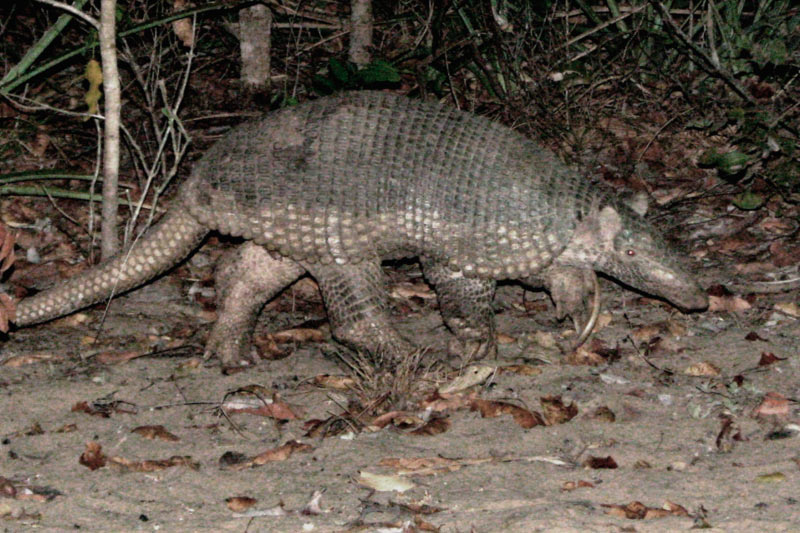The southern tamandua is a species of anteater that adapts well to both life in trees and on the ground.
Click to learn more
Unfortunately, these animals are commonly run over on Brazilian roads. The anteater’s name means “little ant-eater” in Tupi. The anteater-vest refers to the design of the coat of the species.
Distribution
The anteater inhabits much of South America from the east of the Andes, and from Venezuela to northern Argentina and Uruguay. In Brazil, it is present throughout the national territory, occupying all biomes.
Features
The southern tamandua is a medium-sized animal, which measures between 47 and 77 centimeters in body length, with a tail of 40–68 centimeters. It weighs between five and seven kilograms, with males usually larger than females. The coat is typically pale-yellow in color, with two black stripes that extend to the shoulder in such a way as to look like the southern anteater is wearing a black vest. The forelimbs are well developed, with sharp claws and middle fingers. It has no teeth and the tongue can reach up to 40 centimeters in length.
Behavior
Southern tamanduas are more active during the day but may practice nocturnal behavior in areas where they are disturbed by humans. They have scansorial habits, meaning they can climb, and live both in trees and on the ground. When not active, they rest in hollows within tree trunks, burrows of armadillos or other natural cavities. When southern tamanduas feel threatened, they sit upright on their hind limbs, spreading their arms in a cross-shaped way to look bigger and more intimidating to the aggressor. Their living area ranges between 350 and 400 hectares.
Food
The diet of southern tamanduas consists mainly of termites and ants, honey and bees. Because they have no teeth they eat their food whole, which is then crushed in the stomach with muscles similar to the gizzards of birds.
Reproduction
The gestation period takes between 130 and 150 days, with females usually giving birth to only one offspring at time, but it is possible to see twins being born. The cub remains on the mother’s back during the first months of life, and they are separated when the cub turns approximately one year old.
Conservation
Southern tamanduas have been listed as being of “least concern” both on the national list of ICMBio and by the IUCN.
Threats
The main threats to the species are being run over by vehicles, forest fires, habitat loss, hunting, and conflicts with domestic animals.




















